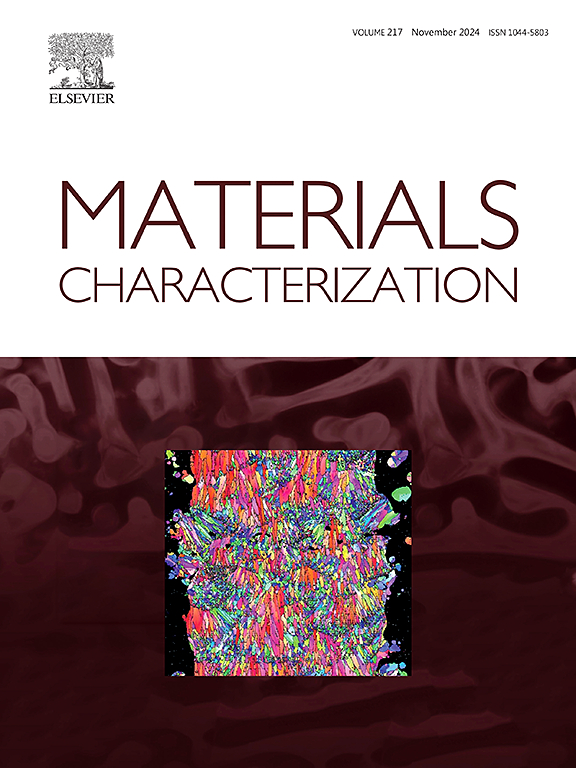Micro- and nanostructural evolution of copper bronze CuAl10Ni5Fe5 during cooling from solution treatments
IF 4.8
2区 材料科学
Q1 MATERIALS SCIENCE, CHARACTERIZATION & TESTING
引用次数: 0
Abstract
The Cu![]() Al bronze alloy CuAl10Ni5Fe5 has been widely used in maritime components, such as large ship propellers, for many decades because of its excellent corrosion resistance and mechanical properties. The alloy is mainly manufactured by casting. In the present work, its micro- and nanostructural development during cooling from solution treatments is investigated. The cooling rates were varied over four orders of magnitude. The precipitation and transformation kinetics are examined in situ by differential scanning calorimetry. The differential scanning calorimetry cooling curves show a complex superposition of multiple reactions. The reactions cover a temperature range of about 800 K. To assign some distinct reactions to certain temperature ranges, a defined step quenching method has been applied. Extensive investigations on the resulting microstructure were performed by optical microscopy, scanning electron microscopy, and transmission electron microscopy. It is found that numerous structural features evolve during cooling (depending on the cooling rate), including formation of α-Cu grains, precipitation of several types of secondary κ-precipitates. The microstructural development of these κI, κII, and κIII precipitates is more complex, as these particles are found to contain multiple types of tertiary phase particles. Tthe development of the microstructure is correlated with the resulting mechanical properties, in a way that the hardness is tested after cooling at different rates.
Al bronze alloy CuAl10Ni5Fe5 has been widely used in maritime components, such as large ship propellers, for many decades because of its excellent corrosion resistance and mechanical properties. The alloy is mainly manufactured by casting. In the present work, its micro- and nanostructural development during cooling from solution treatments is investigated. The cooling rates were varied over four orders of magnitude. The precipitation and transformation kinetics are examined in situ by differential scanning calorimetry. The differential scanning calorimetry cooling curves show a complex superposition of multiple reactions. The reactions cover a temperature range of about 800 K. To assign some distinct reactions to certain temperature ranges, a defined step quenching method has been applied. Extensive investigations on the resulting microstructure were performed by optical microscopy, scanning electron microscopy, and transmission electron microscopy. It is found that numerous structural features evolve during cooling (depending on the cooling rate), including formation of α-Cu grains, precipitation of several types of secondary κ-precipitates. The microstructural development of these κI, κII, and κIII precipitates is more complex, as these particles are found to contain multiple types of tertiary phase particles. Tthe development of the microstructure is correlated with the resulting mechanical properties, in a way that the hardness is tested after cooling at different rates.
求助全文
约1分钟内获得全文
求助全文
来源期刊

Materials Characterization
工程技术-材料科学:表征与测试
CiteScore
7.60
自引率
8.50%
发文量
746
审稿时长
36 days
期刊介绍:
Materials Characterization features original articles and state-of-the-art reviews on theoretical and practical aspects of the structure and behaviour of materials.
The Journal focuses on all characterization techniques, including all forms of microscopy (light, electron, acoustic, etc.,) and analysis (especially microanalysis and surface analytical techniques). Developments in both this wide range of techniques and their application to the quantification of the microstructure of materials are essential facets of the Journal.
The Journal provides the Materials Scientist/Engineer with up-to-date information on many types of materials with an underlying theme of explaining the behavior of materials using novel approaches. Materials covered by the journal include:
Metals & Alloys
Ceramics
Nanomaterials
Biomedical materials
Optical materials
Composites
Natural Materials.
 求助内容:
求助内容: 应助结果提醒方式:
应助结果提醒方式:


